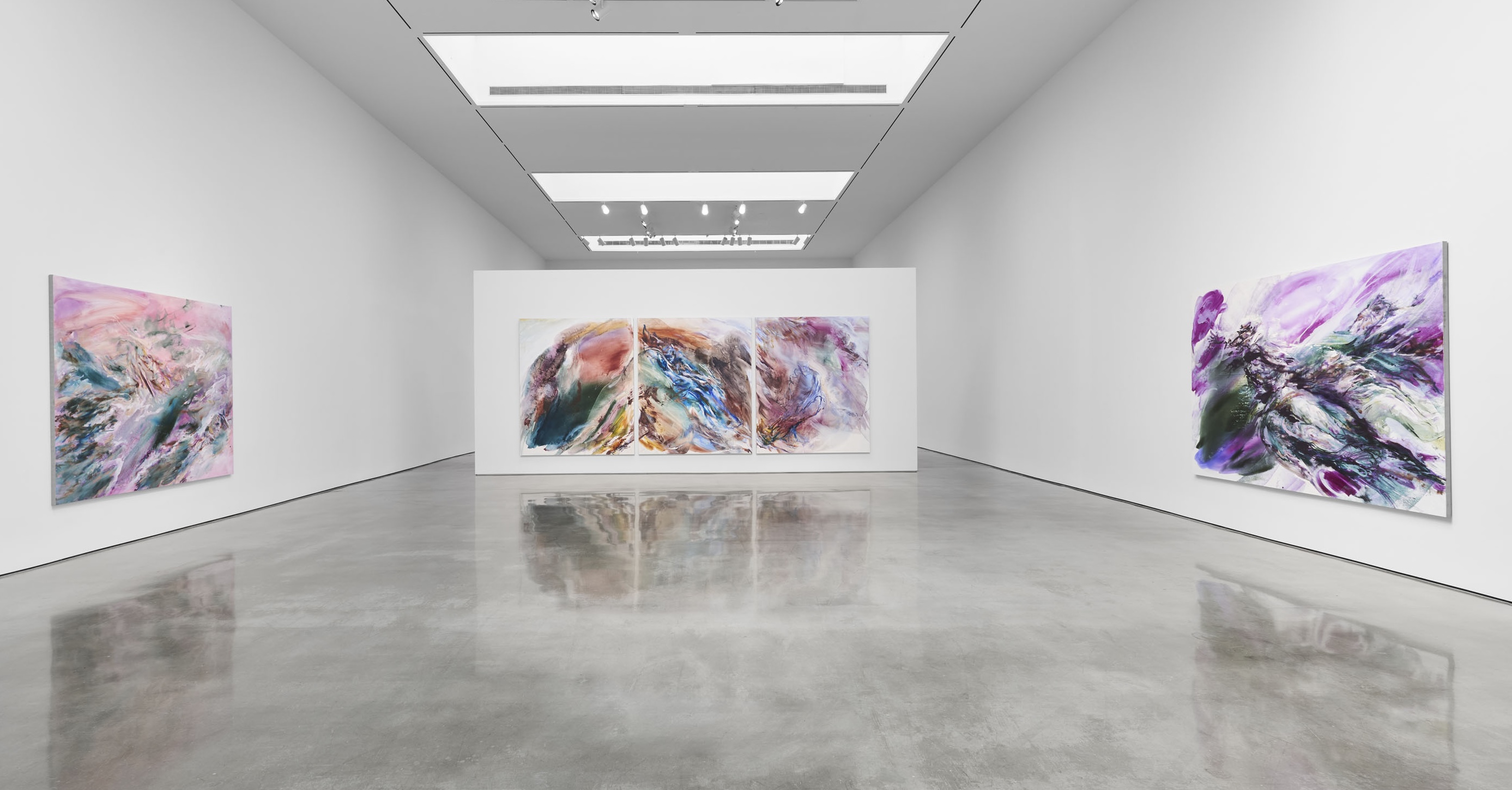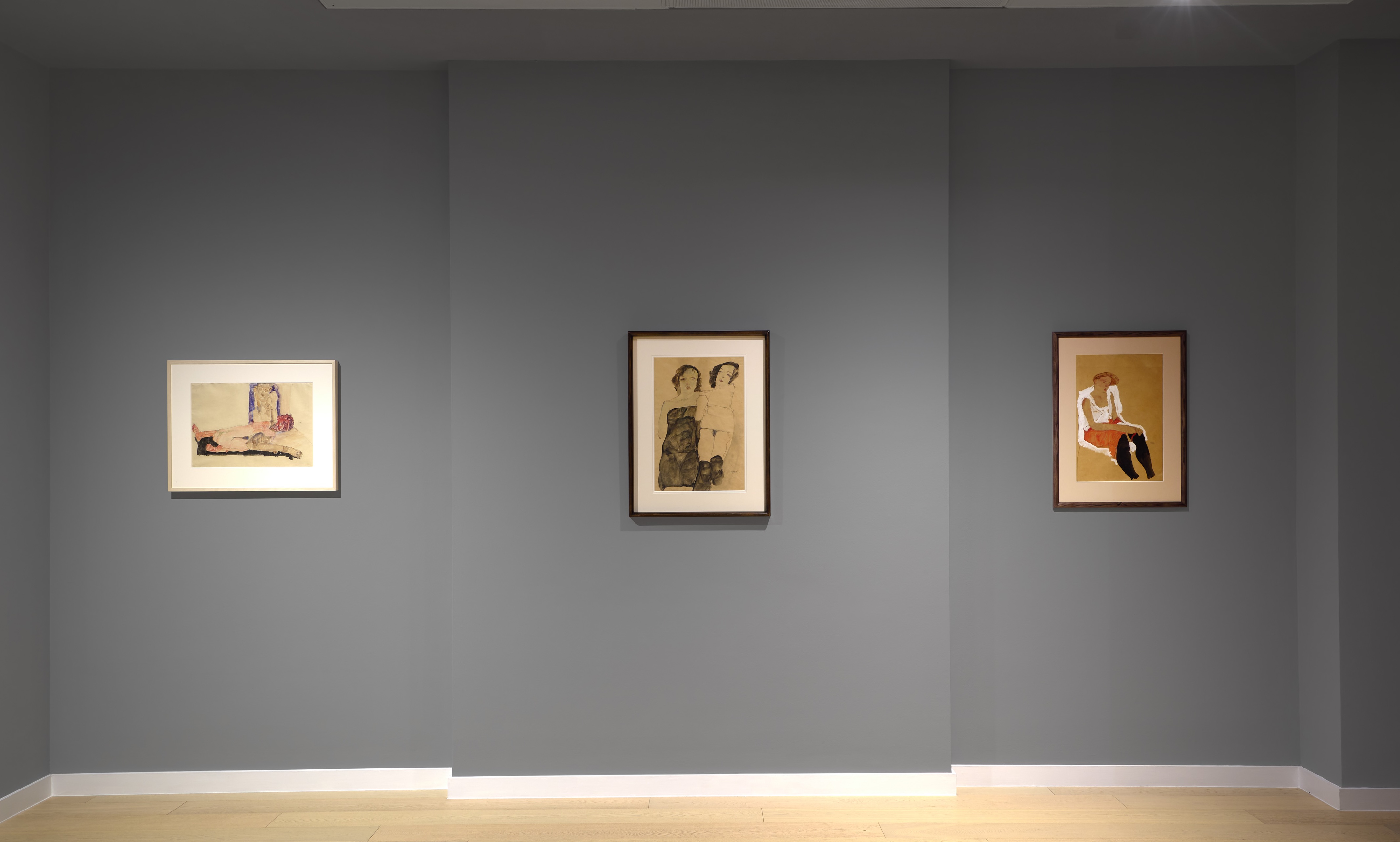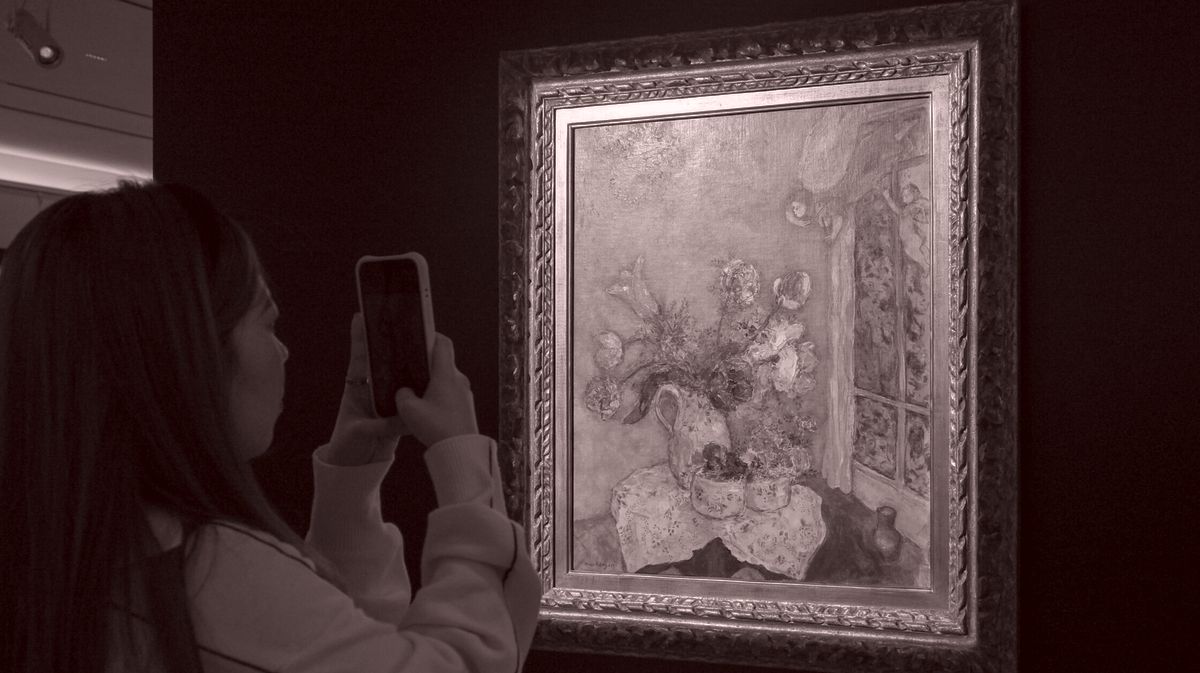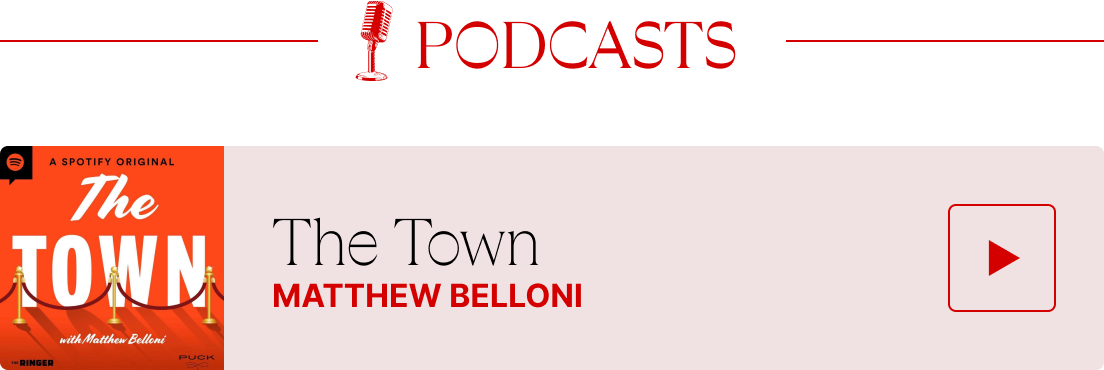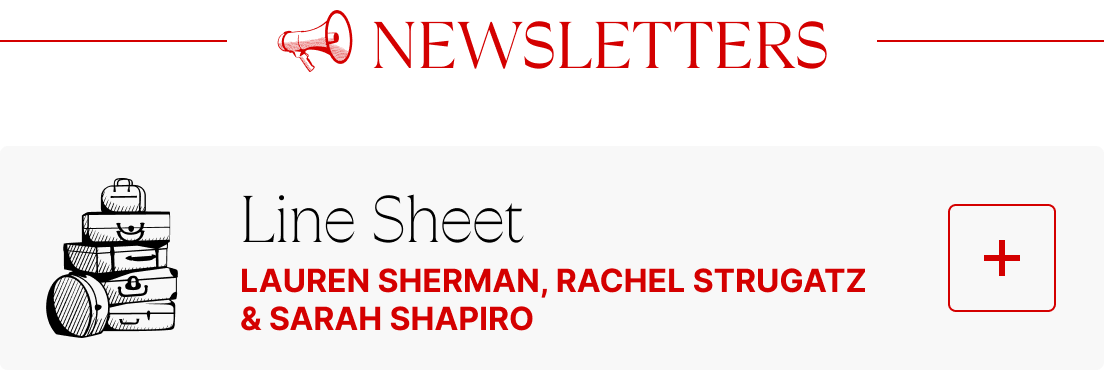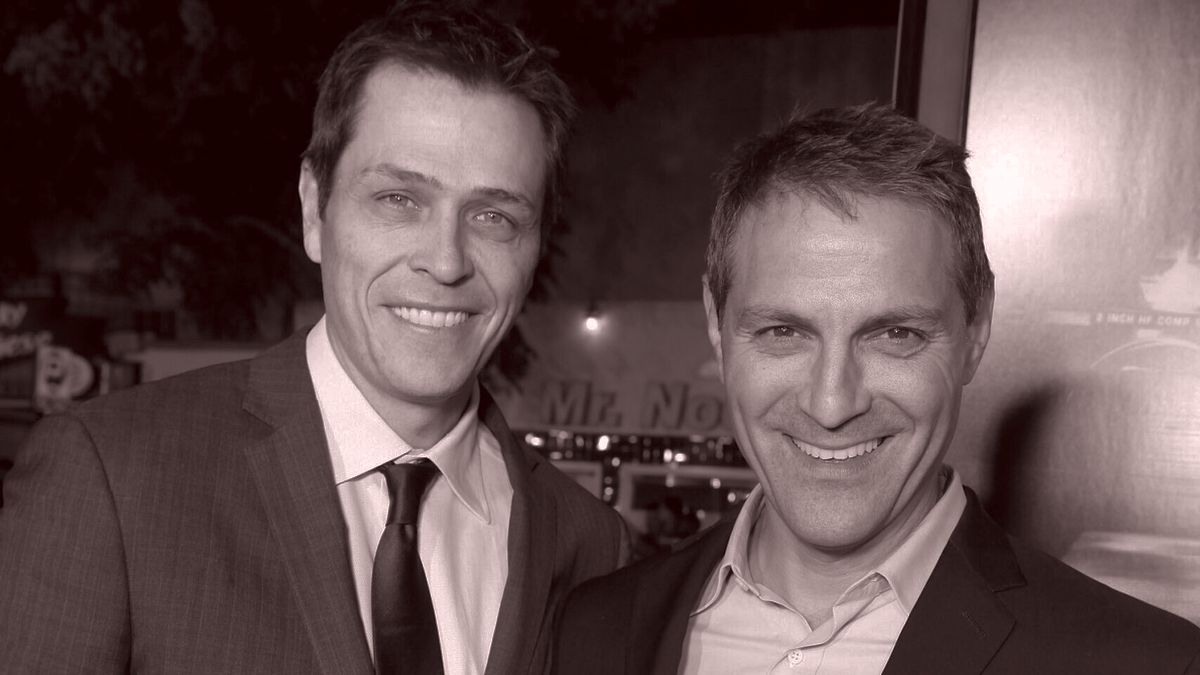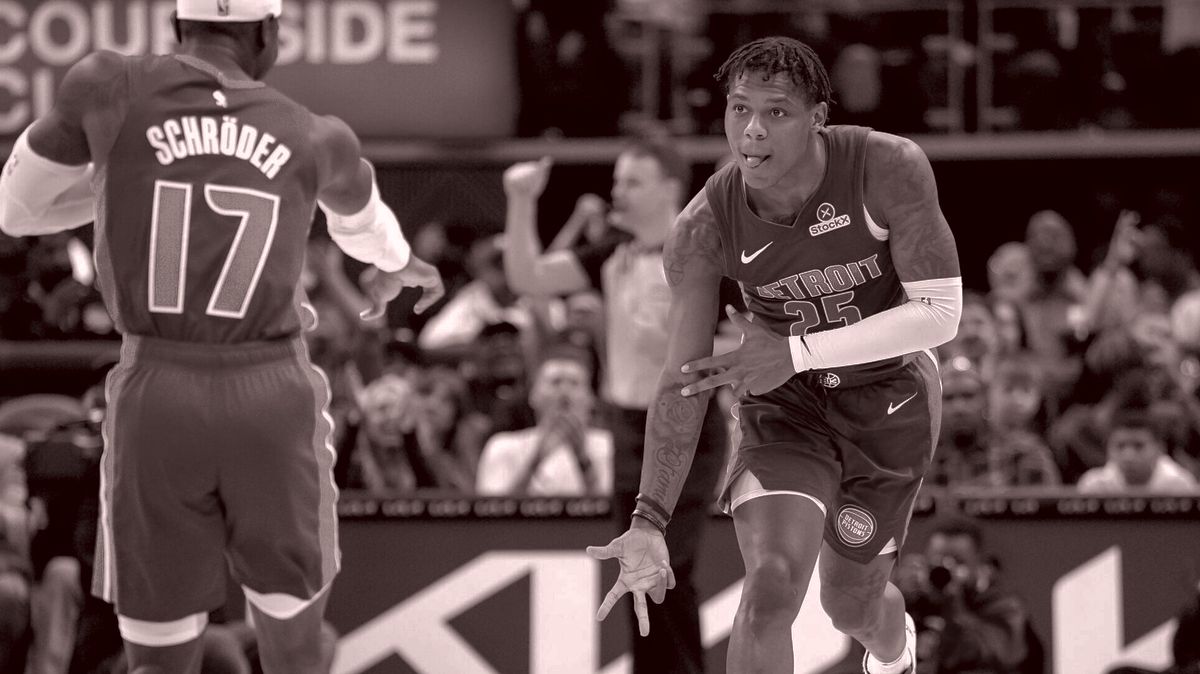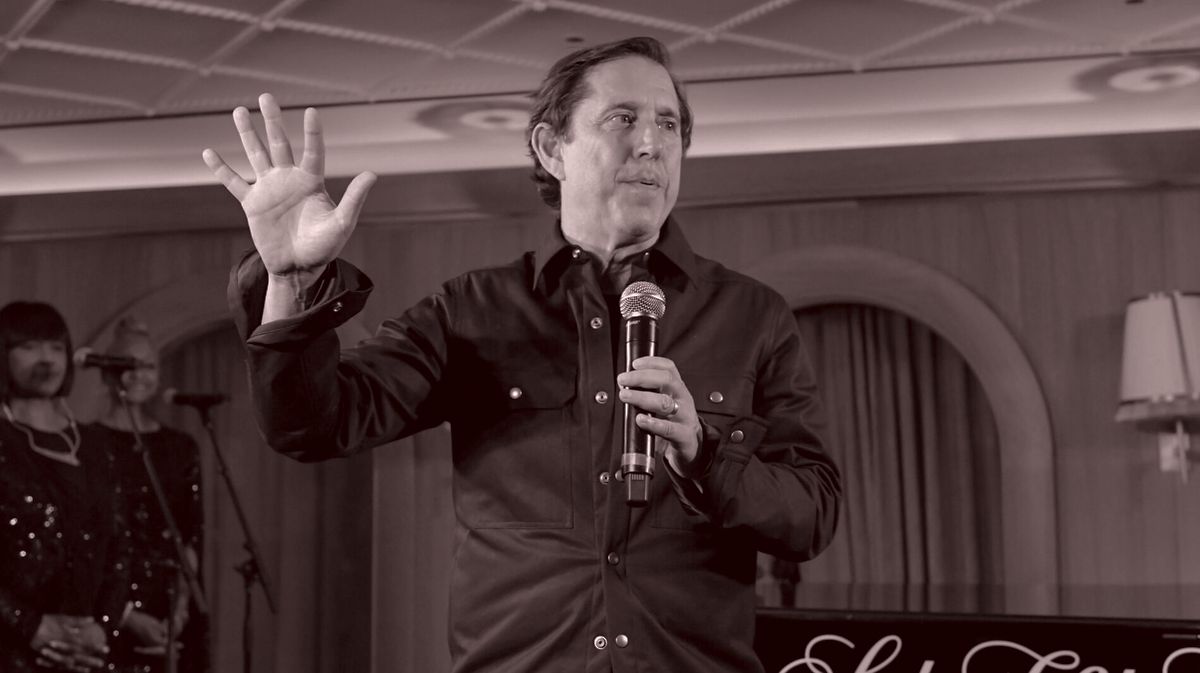Welcome back to Wall Power, where the art world comes to catch up. I’m Marion
Maneker.
Tonight, we’re going to preview the festivities in Hong Kong as Art Basel arrives in town for the fair, gallery shows, and auctions. Meanwhile, we’re going to catch up with Julie Davich, who has a few gallery shows to tell you about.
But first…
|
- Wall Power I.R.L. in L.A.: This weekend, I’ll be in Los Angeles for Design.Space LA, a new retail concept from Basic.Space, the digital marketplace. They’ve brought together products you can get only through Design.Space from a small group of designers, artists, galleries, and brands in their first “I.R.L. to U.R.L.” event. If you’re in L.A. this weekend, March 29 and 30, come to the Pacific Design Center and say hello. The indoor-outdoor setting will include everything from
large-scale installations to collectible design objects by Jean Prouvé, Ettore Sottsass, David Kelley, Max Lamb, Pierre Paulin, Sabine Marcelis, Christo and Jeanne-Claude, Willo Perron, Keiko Moriuchi, and Stickymonger.
The fair is invite-only, but you’re welcome to be my guest. If you
want to come, RSVP at Designspace.la or just send a note here. I’ll be moderating two panels on Saturday afternoon.
Just to give you a taste of what’s going to be on offer, I’ve picked out five items I thought were interesting and worth a look:
- I’m not a vinyl guy. But I’m old enough to have fond memories of racks of brushed-metal stereo equipment topped by turntables. The PP-1 turntable by Waiting For Ideas is a block of aluminum with minimal knobs into which you insert an LP record. No placing a floppy tonearm in the right groove. Just shut the door and the PP-1 takes over.
- Paintings and tapestries by Le Corbusier have been climbing in value on the art market, but, of course, his architecture is the crowning achievement. His complete works make an impressive eight-volume set, which includes details of Chandigarh, the city he designed in India. His cousin Pierre Jeanneret
also designed furniture for the city’s university. You can buy one of his armchairs, commissioned for the school.
- One of the talks I’m moderating is a discussion of Ettore Sottsass, the Italian designer behind the Memphis Group. The most recognizable Memphis object is the
Carlton bookcase, which you can get through Design.Space LA. If I were going to buy a Memphis piece, though, it would be this Hilton trolley designed by Javier Mariscal for the first collection in 1981. If those pieces are too pricey, but you just gotta have a Memphis object, try
this Cucumber vase.
- I don’t think I knew there was a Chrome Hearts x Rolex collab. But here’s a vintage Speedking done up with a Chrome Hearts bracelet that’s sure to excite rock ’n’ roll types.
- Finally,
I’m a sucker for a Turkish kilim. This one is 120 years old, but looks fresh and modern.
|
|
|

|
Julie Brener Davich
|
|
Gallery Hopping with Julie
|
Kylie Manning, installation view of There is something that
stays, Pace Gallery, New York. Photo: Courtesy of Pace Gallery
|
- Kylie Manning: There is something that stays, at Pace New York: Kylie Manning’s solo show is all about time. Anyone who has had a child, as Manning recently did, understands how life gets bifurcated into before and after—and in the after, parents feel they’re constantly running out of time. Manning explores this experience in 14 epic paintings, all created in 2024 and 2025. “They are at a speed
that’s wildly out of control, but then get crystallized at the last second,” she said on the gallery staff tour I recently joined.
Manning compares her painting process to tides washing in and out; she once worked on fishing boats in her home state of Alaska. The child of two art teachers, she lived in different parts of Mexico for extended periods in her youth. The warm and cool tones, as well as the landscapes, of these very different climates can be seen in her work. She also grinds
the literal bedrock—tourmaline, quartz, and graphite—of her current home, New York City, into her pigments.
Manning studied philosophy and visual arts at Mount Holyoke College. Later, while earning her master’s degree at the New York Academy of Art, she was sent to Germany to work alongside the New Leipzig School. She had her first solo exhibition in Berlin, in 2017, and held a show at Anonymous Gallery in New York in 2021. Subsequent shows followed at Pace in Los Angeles, Geneva, and
Hong Kong. This is her first show at Pace New York. On the staff tour, C.E.O. Marc Glimcher described her paintings as having a “ferocity that makes you feel tossed around by them.”
The paintings, each of which took a year to complete, are built up from many layers in a process that involves alternating the canvases between the wall and floor. When laying her canvases flat, Manning pours, wipes, and scrapes away, creating the wash effect of the background; she also tips
them to direct the flow of the various liquids. Between washes, she returns the canvases to the wall in order to layer on drawing and brushwork.
Manning depicts her friends—mostly creatives, like dancers and writers—and abstracts them behind a veil of gestural brushstrokes. “I hope you never know who they are,” she said. The one exception is in the painting Cymbals in My Ears, which shows New York City Ballet principal dancer Sara Mearns, whom Manning met while
working on a commission for the company. The piece was inspired by the dancer’s account of losing her hearing, which Manning likened to the theme of her work: “It’s a fight against time.”
|
Installation view of Egon Schiele: Portraits on
Paper, Omer Tiroche Gallery, London. Photo: Courtesy of Omer Tiroche Gallery
|
- Egon Schiele: Portraits on Paper, at Omer Tiroche Gallery: Tucked away on the second floor of 21 Conduit Street in London, around the corner from Sotheby’s, is Omer Tiroche Gallery. Last week, I walked in through a cloud of humidifier mist to view his exhibition of Egon Schiele portrait drawings, ranging from 1906 to 1918, when the Austrian artist and Klimt protégé died at age 28 of Spanish flu. The greatest cluster of
examples is from 1910 to 1911. Thirteen of the 14 works are on loan from a British collector, who’d been looking for an opportunity to share his trove with the public—“a pure passion project,” Omer Tiroche told me on the phone from Hong Kong. One of the works consigned after the exhibition announcement, a portrait of a nude couple, possibly postcoital, is available for $1.2 million.
The earliest drawing in the show is a profile portrait in red charcoal of the artist’s
mother—her eyes downcast, her hair upswept—from 1906, when Schiele was just 16. It is drawn in the ultra-conservative style of the Vienna Academy of Fine Art, which he withdrew from in 1909. Schiele’s definitive style emerged over the next couple of years, depicting emaciated, elongated, sexually charged street urchins and prostitutes with inner torment. There are three portraits in the show of young boys, from 1910, ranging from the innocent Junge im grünen Mantel (Boy in Green Coat),
with his hands in his pockets, to the nude Seated Boy sitting with his legs splayed open. It’s the latter type of drawing that got Schiele arrested for public immorality.
Schiele frequented brothels to find subjects, and the show includes various examples of pensive, languorous nudes. A highlight from this period is the bare-breasted cabaret dancer Moa, seductively holding open a skirt in shades of ultramarine and umber. There is a line drawing from 1913 depicting
Schiele’s girlfriend, Walburga “Wally” Neuzil. (Interestingly, on the verso, there’s an outline of some houses.) During this time, Schiele’s life and art underwent a radical shift to become tamer and more socially accepted. Previously, scholars pointed to the end of his relationship with Neuzil and his marriage to his neighbor, Edith Harms, as the catalyst. But a recent
article in the Journal offers a different explanation: Scholars now believe that Schiele’s dramatic change in tone came about when his sister had a child, which caused him to mature and perhaps become more sentimental.
Schiele’s later works in the Omer Tiroche show are more demure. The three works from 1917-1918 embody the shift. In Hockende Frau
(Squatting Woman), we see a woman bent forward over her legs, looking down at an intimate view that Schiele would have previously made the focal point. Then there are two line drawings of nudes, both from the back. The London show is open through May 2. The show that the Journal noted—Changing Times. Egon Schiele’s Last Years, 1914-1918—opens at the Leopold Museum in Vienna next week.
|
|
|
Now let’s look forward to Hong Kong…
|
|
|
Instead of kicking off what ought to be a season of excitement for the island
city, the increasingly attenuated market conditions in Asia (and the United States) are turning Art Basel into a soft launch for Hong Kong’s new look.
|
|
|
This year’s Art Basel Hong Kong marks the first time that auctions will be held concurrently at
Christie’s, Phillips, and Sotheby’s. When these facilities were planned, the hope was that they would inaugurate a new phase for the global art market based on an ever-growing Asian appetite for art. All three firms now have dedicated headquarters in Hong Kong complete with their own sale rooms. The facilities are in very different parts of the city: Christie’s and Sotheby’s are in the main commercial center, while Phillips has a prime spot in the West Kowloon Cultural District, where the M+
museum is located.
Even though there is a lot of very good (or at least good) art in Hong Kong right now, none of it seems so great or exciting that you have to buy it now. That may say more about our times than the art itself, but try telling that to a dealer with overhead to cover. So, instead of kicking off what ought to be a season of excitement for the island city, the increasingly attenuated market conditions in Asia (and the United States) are turning Art
Basel into a soft launch for Hong Kong’s new look.
At auction, Phillips is taking a high-volume approach, with 120 lots in a single-day sale. Notably, somebody is flipping Ayako Rokkaku’s untitled work from 2023, which is estimated at HK$2.4 million ($308,000). It’s a smart play, since the massive triptych is almost 17 feet wide, and her top price
of $1.3 million was achieved for a painting that was nearly 6 feet tall. An Issy Wood painting from 2020 is being offered with an estimate of HK$800,000 ($103,000). There are also a number of works by artists like Edgar Plans, Katherine Bernhardt, Eddie Martinez, and George Condo, who
all sell well in Hong Kong. An interesting addition, not long after his death, is a work by Mel Bochner titled Oh Well.
Sotheby’s evening sale of modern and contemporary art has a healthy 45 lots, starting with Li Hei Di, the abstract painter represented by Pace, who opens the sale with Drifted Petals on Her Lifted Mound,
from 2022, estimated at HK$300,000 ($38,000). The opening run of lots, which the auction houses hope will significantly outperform estimates to build momentum for the sale, includes Christine Ay Tjoe and Shara Hughes, whose work has had a long run of success in Hong Kong. But the top works by estimate are a 1930 Marc Chagall, Fleurs de printemps,
estimated at HK$22 million ($2.83 million); Henry Moore’s tabletop Working
Model for Reclining Figure: Prop, from 1976, estimated at HK$16 million ($2 million); and another tabletop work, this one a version of Le Baiser by Auguste Rodin, estimated at HK$16 million ($2 million). All three of these works were sold in Sotheby’s other
auctions within the past decade for prices right around the estimates.
Christie’s evening sale of 20th/21st century art is also a tight 43 lots, led by a Jean-Michel Basquiat painting estimated at HK$95 million ($12 million), a Zao Wou-Ki from 1967 estimated at HK$40 million ($5 million), two René Magritte paintings—one estimated at HK$42 million ($5.5 million) and the other at HK$15 million ($2 million)—and works by Christine Ay Tjoe and
Zhang Enli that are guaranteed to set records for the artists.
|
The big global galleries are also making a splash in their own facilities in the city—and at the
fair. Pace, David Zwirner, Hauser & Wirth, Gagosian, Ben Brown Fine Arts, and Blum gallery—among many, many others—are all representing alongside the major auction houses.
Pace Gallery, for instance, opened an exhibition that marks the beginning of its representation of the Robert Indiana Legacy Initiative, one of the two entities that now control the artist’s intellectual property and art. The
show contains examples of Robert Indiana’s ubiquitous Love sculptures, some of his sublime number series, and even a 2003 diamond painting with the Chinese character for “peace.” The Hong Kong show is a teaser for the collaboration’s bigger New York debut coming later this spring.
At the Art Basel booth, meanwhile, Pace will show a 1970
work titled Tail-cock party by the somewhat overlooked surrealist artist Roberto Matta, who was influential among the abstract expressionist group in New York. There will also be a new painting from the abstract painter Li Hei Di, who will have a show in Hong Kong in a few months, a 2008 work by Lee Ufan, and works by Alicja Kwade, who also has a show in the city at Tai Kwun, the former police station that’s now a cultural
center.
David Zwirner gallery is bringing its Belgian powerhouses, Michaël Borremans and Luc Tuymans, to the fair to follow up on recent shows in Beijing (Borremans) and Shanghai (Tuymans). At the booth, there will also be works by stars from the Zwirner stable like Elizabeth Peyton, Lisa Yuskavage, and Steven Shearer, as well as works by Josef Albers, Robert Ryman,
and Katherine Bernhardt. Zwirner’s Hong Kong gallery is also showing Emma McIntyre, a New Zealand–born, Los Angeles–based abstract artist who joined them last year.
Hauser & Wirth is marking the fair with a
show of Louise Bourgeois’ sculptures and paintings titled Soft Landscape, uniting her interest in landscapes and the human form at a time when a major survey of the artist’s work just opened in Taipei. For its part, Gagosian is opening a new show of Sarah Sze’s work in Hong Kong, her first in Asia. The
artist just won the inaugural $100,000 Meraki Artist Award from Boston’s ICA. Gagosian’s fair booth will have a very tall painting by Sze alongside a 2020 abstract by Albert Oehlen, a recent painting by Hao Liang, a 1989 pumpkin painting by Yayoi Kusama, work from Tetsuya Ishida and Lauren Halsey, an abstract painting by Zeng Fanzhi, and a new John Currin painting.
Ben
Brown Fine Arts will have a small but striking Gerhard Richter abstract from 1985 at their booth. Finally, Blum gallery will show Gutai pioneer Toshio Yoshida for the first time, as well as key figures from important Asian abstract movements like Dansaekhwa and Mono-ha alongside contemporary artists like Patrick Eugène, Hadi Falapishi, and Asuka Anastacia Ogawa.
|
I’m back with the Inner Circle tomorrow. If you haven’t signed up, rectify the
situation here.
M
|
|
|
Puck founding partner Matt Belloni takes you inside the business of Hollywood, using exclusive reporting and
insight to explain the backstories on everything from Marvel movies to the streaming wars.
|
|
|
The ultimate fashion industry bible, offering incisive reportage on all aspects of the business and its biggest
players. Anchored by preeminent fashion journalist Lauren Sherman, Line Sheet also features veteran reporter Rachel Strugatz, who delivers unparalleled intel on what’s happening in the beauty industry, and Sarah Shapiro, a longtime retail strategist who writes about e-commerce, brick-and-mortar, D.T.C., and more.
|
|
|
Need help? Review our FAQ page or contact us for assistance. For brand partnerships, email ads@puck.news.
You received this email because you signed up to receive emails from Puck, or as part of your Puck account associated with . To stop receiving this newsletter and/or manage all your email preferences, click here.
|
Puck is published by Heat Media LLC. 107 Greenwich St, New York, NY 10006
|
|
|
|

